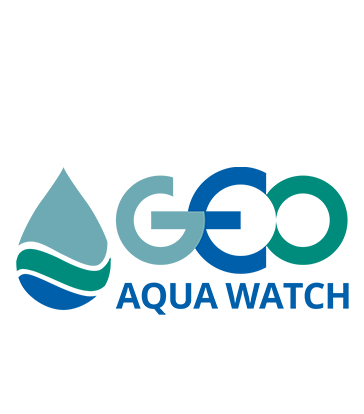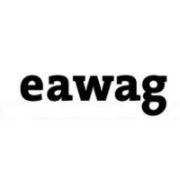| Join us next week at ESA Living Planet Symposium for a special 3 part session on water quality, A7.06 ‘EO for monitoring water quality and ecological status in inland waters’, convening Thursday afternoon May 26th as part of the ESA Living Planet Symposium, Bonn (https://lps22.esa.int/).
The 3 back-to-back sessions will run from 1:30pm – 4:30pm and focus on the innovative use of Earth Observation for water quality monitoring and ecological research. We will interpret inland waters in a broad sense to include nearshore coastal environments. The full session description is included below. A7.06 EO for monitoring water quality and ecological status in inland waters Session Description: Inland waters are important and vulnerable ecosystems that, despite covering a relatively small area of the Earth’s surface, support a disproportionate amount of biodiversity and ecosystem services, providing numerous benefits to humans such as food provisioning, transportation, and recreation. Moreover, inland waters are increasingly threatened by anthropogenic pressures including climate change, land use intensification and eutrophication. Satellite remote sensing can contribute to monitoring and understanding changes in water quality parameters (turbidity, chlorophyll etc.), ecological status (e.g., trophic status, toxic algal blooms) and ecological processes (e.g., primary production) in inland waters, providing valuable data for investigating the drivers and impacts of these changes, and supporting water resources management and decision-making. In recent years, there has been a shift from remote sensing studies focused on individual waterbodies to the development of products that can be applied at a regional or global scale, including efforts to generate global products that combine information from several satellite sensors to produce multi-decadal records of lake parameters. However, there is still much to be done to generate Earth Observation algorithms and data products, that are robust across the wide concentrations ranges of optically active water constituents present in inland waters. This session aims to showcase the development and application of new methods for monitoring water quality and ecological status of inland waters using satellite Earth Observation technologies. Contributions are particularly welcomed that describe novel approaches (e.g., using machine learning, ensemble classifiers, cloud computing and new satellite sensors) that are applicable across multiple waterbodies and that allow investigation of long-term temporal dynamics and spatial patterns within and between inland waters. We seek presentations which demonstrate a holistic approach to characterizing inland water ecosystems, integrating remote sensing, in situ data and modelling. Of particular interest would be projects which leverage technology or unique capacity development techniques to get the water quality information into the hands of decision-makers to improve water resource management. Convenors: Emma Tebbs (King’s College London); Carmen Cillero (3edata); Merrie Beth Neely (GEOAquaWatch); Ils Reusen (VITO Remote Sensing); Stefan Simis (Plymouth Marine Laboratory); Evangelos Spyrakos (University of Stirling)
|
News
Introductory ARSET Training Series: June 1, 8, &15 – Satellite Evapotranspiration
| Introductory Webinar: Applications of Remote Sensing-Based Evapotranspiration Data Products for Agricultural and Water Resource Management | |
| June 1, 8 & 15, 2022 11:00 – 12:30 EDT (UTC-4) or 16:00 – 17:30 EDT (UTC-4)Evapotranspiration (ET) is the process by which the land surface returns water to the atmosphere in the form of moisture. ET is a very important part of the water cycle in the Earth system. It is the sum of evaporation from bare soil and transpiration from vegetation. For a given watershed, the supply of water from precipitation, surface and groundwater can be depleted via ET. Therefore, estimating the amount of ET is crucial for calculating the overall water budget and for effective water management. Since ET indicates loss of moisture from the soil and vegetation, monitoring ET on agricultural fields helps with crop irrigation activities and water conservation. Because ET depends on land surface characteristics such as type of vegetation and soil moisture, available heat energy from sunlight, and atmospheric weather conditions; it is not possible to measure ET directly. Remote sensing observations provide several of the land and atmospheric parameters useful for estimating ET. Several methodologies have been developed using various satellite observations to estimate ET over the past two decades. These ET products are used for a variety of applications from the farm scale to the watershed scale. This 3-part webinar series focuses on introducing newly available ET products derived from remote sensing observations. It will specifically cover a web portal called OpenET (https://openetdata.org/), which includes ET products estimated by using six models as well as Landsat satellite observations. These ET products cover the western United States. In addition, information about global ET products derived from ECOsystem Spaceborne Thermal Radiometer Experiment on the Space Station (ECOSTRESS) will also be covered. The webinar series will provide details about OpenET and ECOSTRESS ET products, demonstrations and hands-on exercises for data access and analysis, and examples of applications of the data.
|
Call for Submissions: Special Issue of Remote Sensing
The open access journal Remote Sensing (ISSN 2072-4292, IF 4.848) is pleased to announce a new Special Issue entitled “Remote Sensing Observation on Coastal Change”. Dr. Manon Besset and Dr. Halina Kaczmarek are serving as Guest Editors for this issue. The submission deadline is 31 October 2022 and papers may be submitted immediately or at any point until 31 October 2022, as papers will be published on an ongoing basis. For more information on this Special Issue and submission guidelines, please visit the following page: https://www.mdpi.com/si/
We also invite you to post an early version of your paper on our free preprint platform, Preprints, allowing you to receive feedback from your peers and make your early results citable. For more information or to submit your preprint, visit https://www.preprints.org/how_
EAWAG Opportunity! PhD student in Remote Sensing of Aquatic Primary Production
Eawag, the Swiss Federal Institute of Aquatic Science and Technology, is an internationally networked aquatic research institute within the ETH Domain (Swiss Federal Institutes of Technology). Eawag conducts research, education and expert consulting to achieve the dual goals of meeting direct human needs for water and maintaining the function and integrity of aquatic ecosystems. The Department Surface Waters Research and Management (SURF) has an open position for a PhD student in Remote Sensing of Aquatic Primary Production. The position will use automated in situ measurements from research platforms in Lake Geneva
(Switzerland/France) and Greifensee (Switzerland), hyperspectral airborne and satellite data to develop new techniques for the estimation of primary production in lakes.
Apply by April 20, 2022. Find out more here
Expressions of Interest Due March 31st: GEOAquaWatch-NASA Validation Workshop
Workshop on the Validation of Satellite-derived Optical and Water Quality Parameters for Coastal and Inland Waters
Co-sponsored by GEO AquaWatch and NASA
June 7-9th, 2022 Madison, Wisconsin
See Water Quality Validation (wisc.edu) for details and expression of interest form (March 31st deadline).




